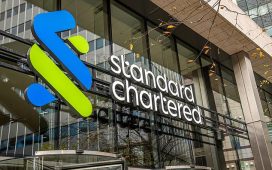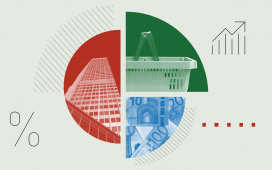Blink and you may have missed it: this year iShares made subtle but significant changes to its sustainable and responsible investing (SRI) ETF range.
In May 2024, BlackRock, which is the largest player in the European ETF space, amended the benchmark MSCI indexes currently custom-made for iShares. In this article we discuss what this means for investors in the broader context of the SRI landscape — as well as with specific reference to three funds covered by our Manager Research team.
What Has Changed?
The recent changes were made to enhance transparency, improve diversification, and reduce tracking error relative to the parent MSCI Indexes.
Transparency
In ranking eligible securities, ESG trends are no longer considered. This adjustment makes it easier to understand why specific stocks are included. All eligible companies with the highest ESG ratings are now included in the target index, where previously some had been excluded in favor of companies with lower overall ratings but a higher ESG trend score.
Improving Sector Diversification
The top 25% of securities by number in each sector within the eligible universe are now selected. This is in addition to the existing rule of selecting 25% of the free-float market capitalization of each sector in the parent index. This change prevents any single large constituent from dominating a sector.
Reduced Tracking Error Versus Parent Index
The previous single stock cap of 5% has been replaced. Now, no constituent can exceed +3% of its weight relative to the parent index, with an absolute cap of 18%. Additionally, a new cap ensures that each sector’s weight cannot deviate more than +/- 1% from the corresponding sector weight in the parent index. These measures aim to correct some of the more egregious single stock and sector bets and to make the SRI indexes more closely aligned with their parent index.
Next Steps For Sustainable Index Strategy Evolution
The recent changes to the iShares SRI ETF range in Europe represent the latest in a series of strategy changes implemented since the first strategy was launched in 2016.
In the below table, we show the evolution of the SRI strategy through key index changes.
Changes have trended towards greater complexity with the addition of new layers of screening and scoring through time. For example, the ESG trend score, which rewards companies with improving ESG profiles was added to incentivize improvement in target companies in 2018. The latest update, which removes this score, marks a notable shift towards simpler, more transparent and explainable ESG solutions.
Why Were the Changes Implemented?
The recent updates were made to address several prevalent concerns among clients regarding ESG investments.
Widespread Underperformance
After over a decade of net inflows, European-domiciled Equity ETFs tracking MSCI SRI strategies experienced net outflows in 2023, a trend that has continued into 2024.
For instance, in the second quarter of 2024, the iShares MSCI USA SRI ETF saw outflows of $1.74 billion (£1.33 billion), the second-largest among European sustainable funds. Various factors, including rising global geopolitical tensions and increased demand for traditional energy, have led to widespread underperformance and a broader reassessment of ESG investments.
Minimizing Tracking Error while Maximizing ESG Exposure
Investors tend to prefer ESG or SRI portfolios that align closely with the parent index while maintaining strong ESG credentials. Strategies with the highest ESG scores may deviate significantly from the broader market, leading to substantial differences in performance due to single stock bets or persistent sector and geographic over/underweights.
Increased Demand for Transparency
As ESG strategies become more complex due to improved data availability and the need to differentiate product offerings, it has sometimes been difficult to ascertain why certain companies are chosen over others. This has led investors to call for greater transparency.
What is The Impact?
While we view these changes as broadly positive, they have not moved the needle when it comes to the funds we rate. However, the impact of these changes has been different across the range.
iShares MSCI USA SRI ETF
• Morningstar Rating: Bronze
• Morningstar Category: US Large-Cap Blend Equity
• Ongoing Charge: 0.20%
The removal of the ESG trend criteria allowed for the inclusion of Nvidia (NVDA), one of the world’s largest companies, which had previously been excluded. Under the old methodology, securities with a positive ESG trend ranked higher than those with a neutral trend. Despite consistently holding the highest ESG scores since 2020, Nvidia was classified with a neutral ESG trend and was excluded. As of the end of July 2024, Nvidia holds a 9.51% weight in the MSCI USA SRI Select Reduced Fossil Fuels Index.
In this fund, the previous large sector biases have been corrected through adjustments to issuer and sector caps. For example, before these changes, the MSCI USA Index had a technology sector weighting of about 30%, whereas the SRI Index had only around 10% exposure to technology. Now, both indexes have technology constituting roughly one-third of the overall portfolio.
Despite containing about 30% of the approximately 600 constituents in the MSCI USA Index, the fund retains many of the core characteristics of the parent index. iShares backtests show that the active share and tracking error have been largely unaffected.
Previously, this fund’s Process Pillar was at Above Average because it had a diversified broad market cap-weighted portfolio. While the portfolio has been improved due to the methodology changes, this fund still has shortcomings that limit its Process Pillar rating to Above Average.
iShares MSCI EM SRI ETF
• Morningstar Rating: Neutral
• Morningstar Category: Global Emerging Markets Equity
• Ongoing Charge: 0.25%
Happily, the prior large deviations in sector weights relative to the parent index, particularly for the financial, technology and consumer discretionary sectors, have been largely eliminated. This was due to the introduction of a sector cap of +/-1% relative to the parent index and change in the issuer cap.
However, differences in the benchmark index’s country weightings have been further widened. The resultant structural underweightings to China (10%) and overweightings to Taiwan (10%) relative to the MSCI Emerging Markets index will be key factors in future fund performance.
Despite the changes, the fund still screens out over 1,100 of the 1,300 constituents of the parent index and back testing by iShares indicates the index’s active share and tracking error will remain high. These limitations contribute to the fund’s Process Pillar rating remaining at Below Average.
iShares MSCI Japan SRI ETF
• Morningstar Rating: Bronze
• Morningstar Category: Japan Large-Cap Equity
• Ongoing Charge: 0.20%
iShares MSCI Japan SRI ETF retained a Process Pillar score of average following the change in strategy.
The most positive change has been the +/- 1% cap on sector differences relative to the parent index. This has seen significant bets in consumer discretionary and healthcare sectors versus the MSCI Japan index largely eliminated.
The addition of 25% by number to the existing top 25% by market cap of ESG scorers by sector also helps reduce single stock concentration within sectors, while the change from a fixed single stock cap (5%) to a relative (+/- 3%) reduces the potential bets taken against some of the largest stocks. That resulted in a 1.5% increase in weight to electronic giant Sony (SONY).
While we welcome these changes, the core characteristics of the fund, such as number of holdings, turnover and (backtested) tracking error versus the MSCI Japan Index, remain largely unchanged.
Ultimately, the stringent ESG exclusion criteria mean this fund still takes significant single-stock bets versus the broader market, limiting our confidence in its ability to outperform over longer periods. That said, it still provides low-cost and largely-representative exposure to Japanese equities in a peer group where passive strategies have proved hard to beat.
Conclusion
The recent adjustments to these funds’ benchmark methodologies are designed to tackle the current challenges faced by many ESG funds. For the three funds we rate, these changes are generally positive. However, despite the modifications to the ETFs’ portfolios, the updates have not led to any changes in our process pillar ratings.











